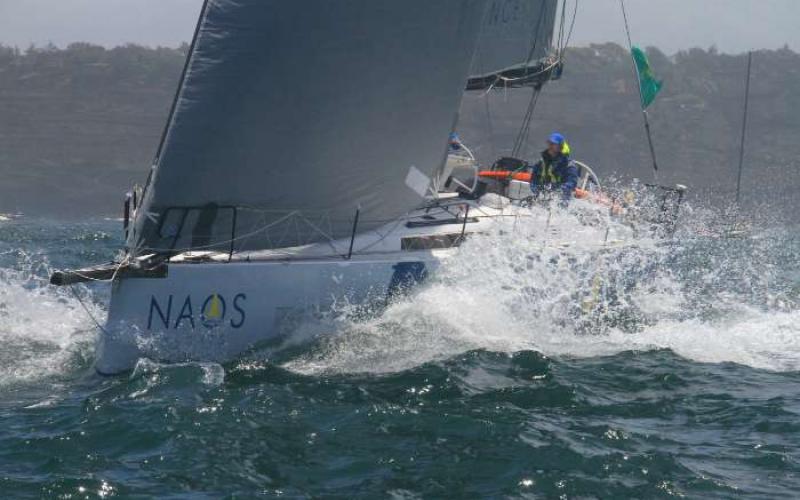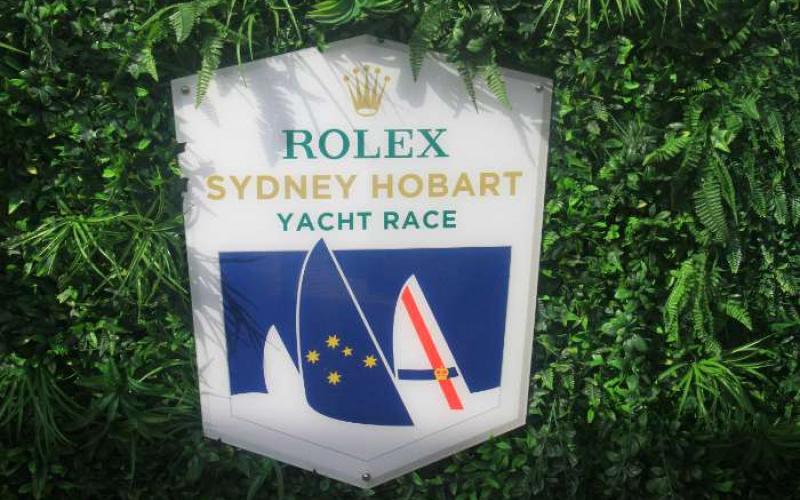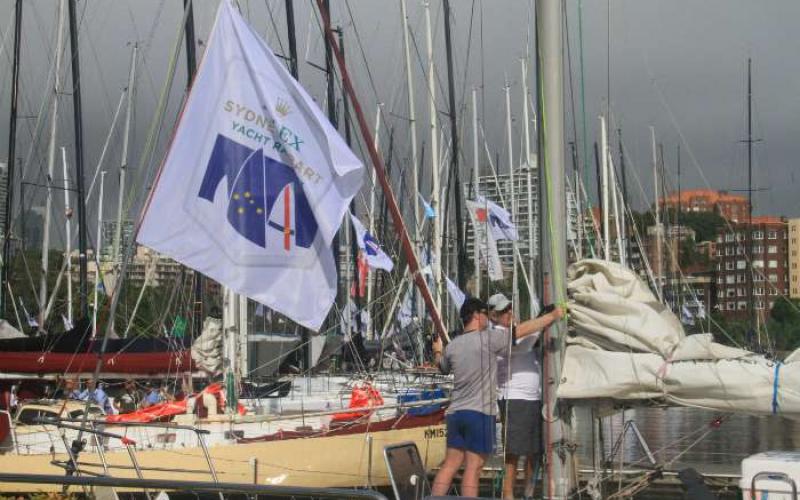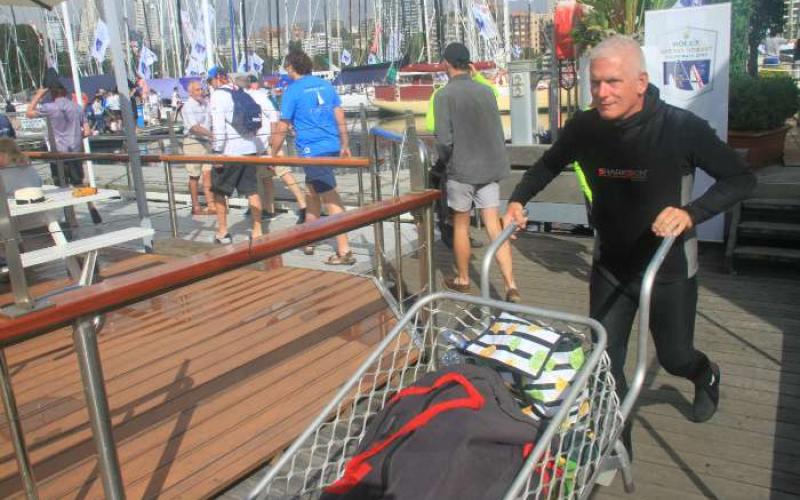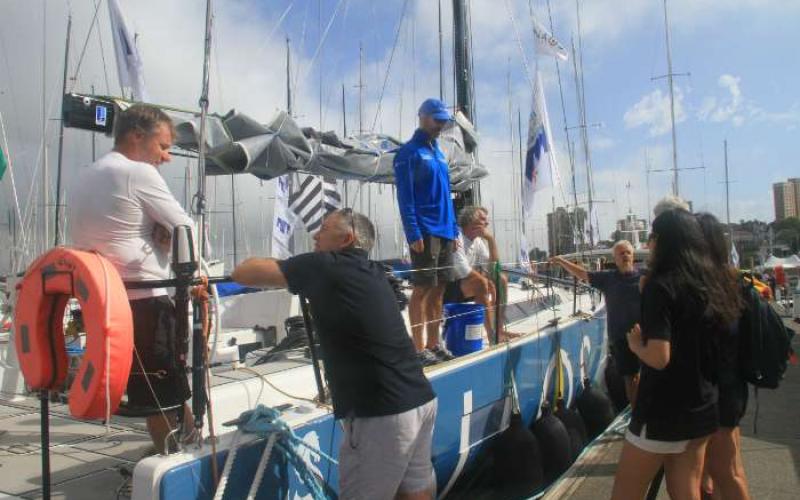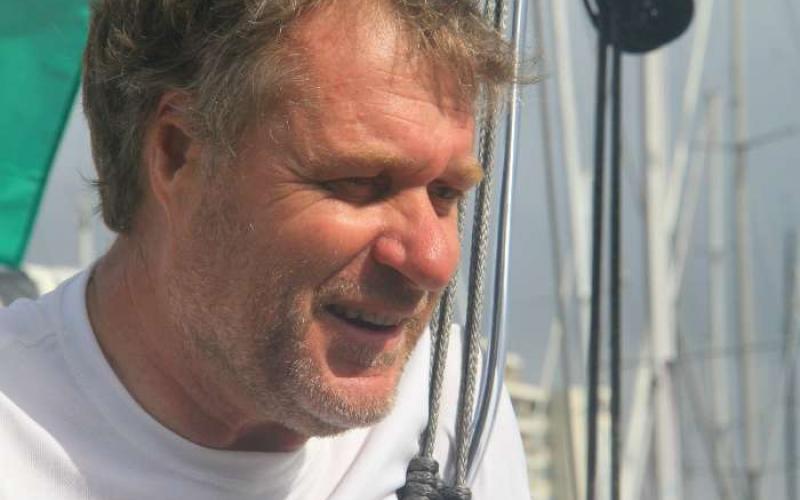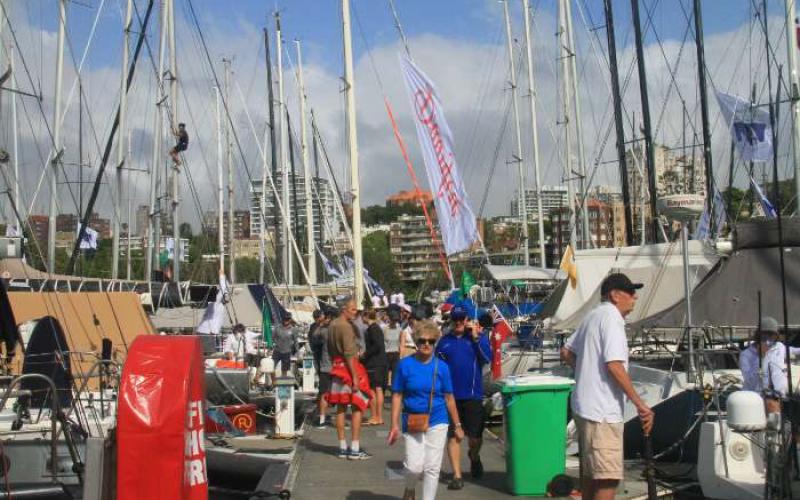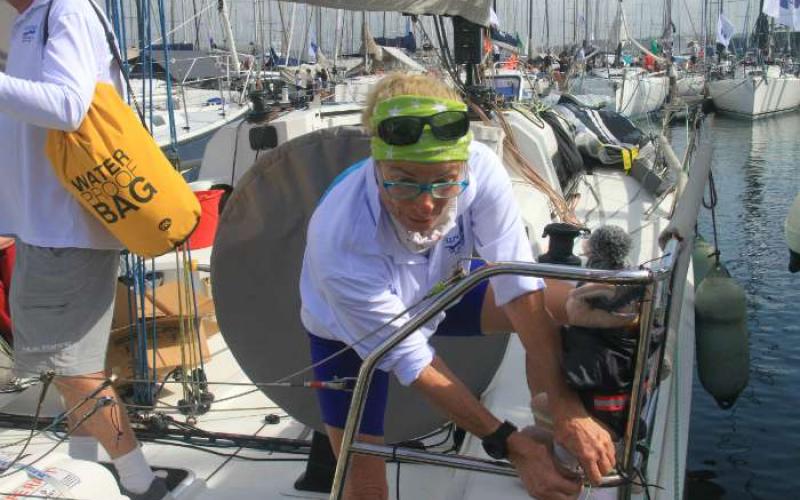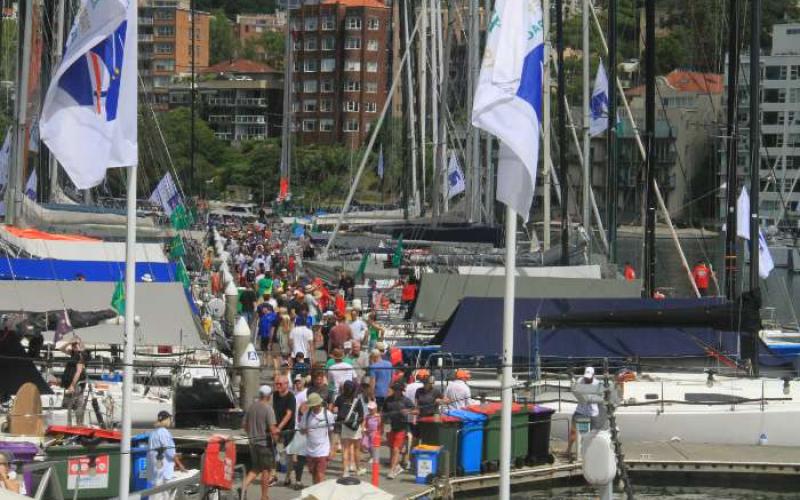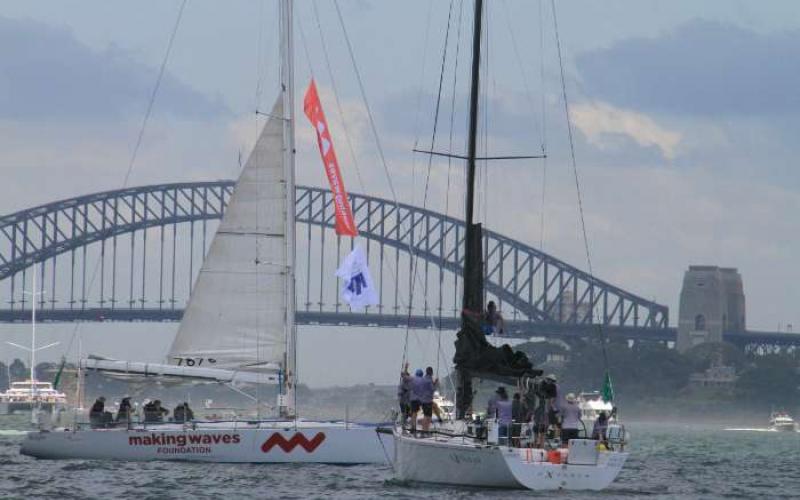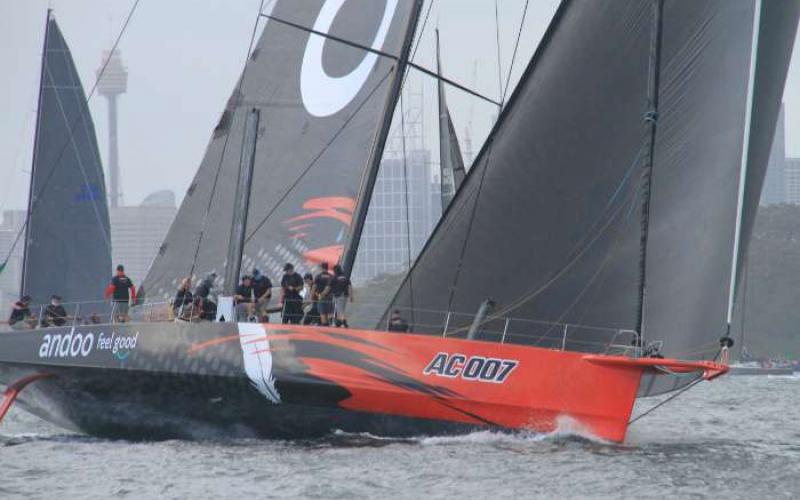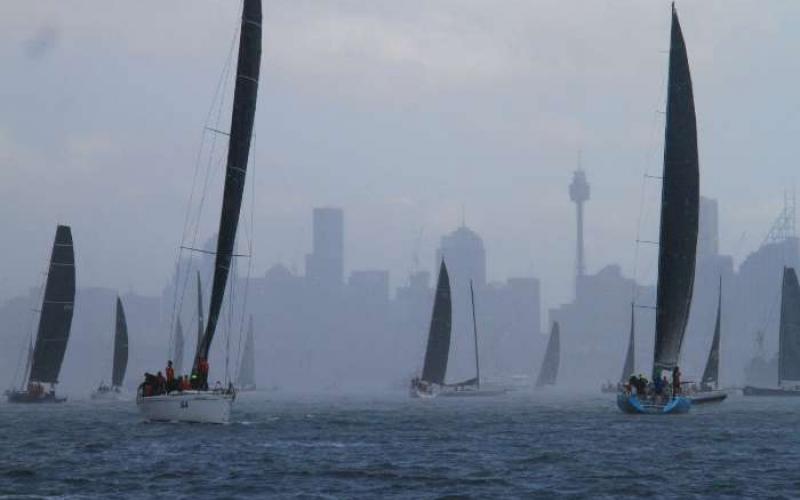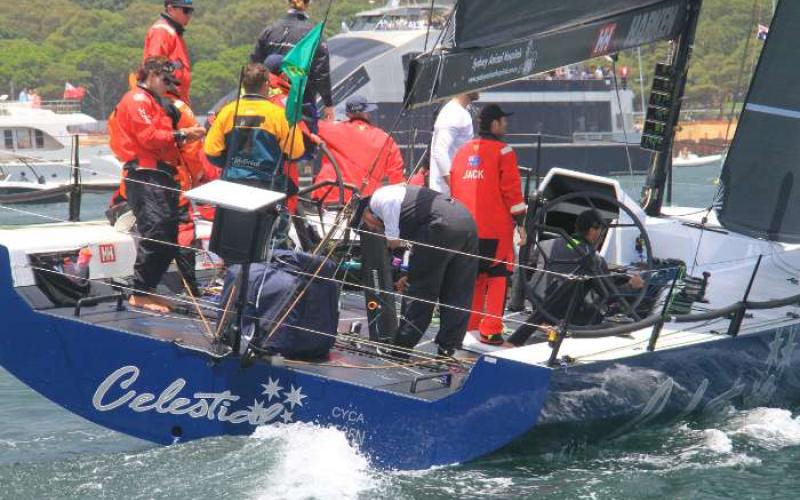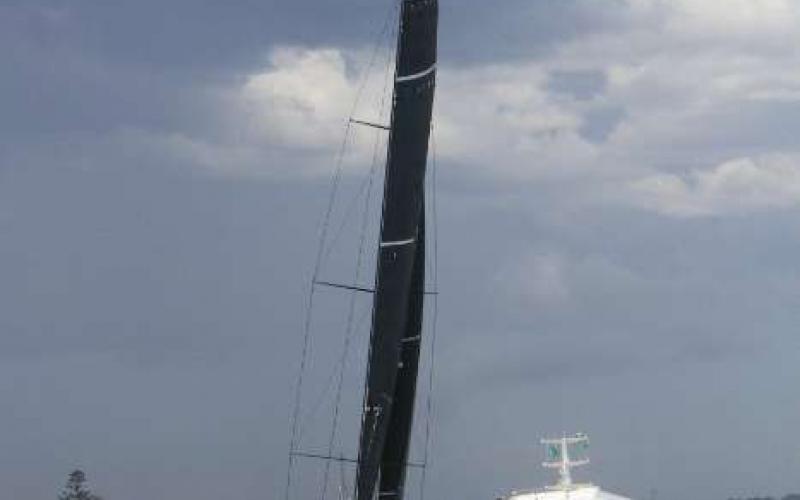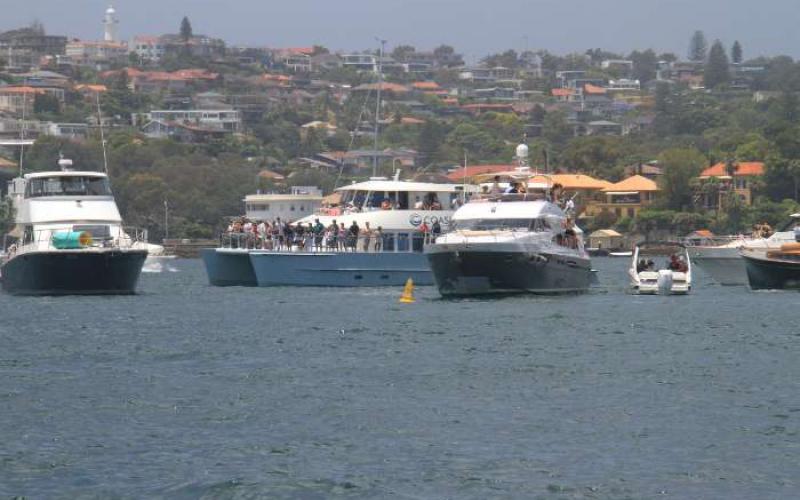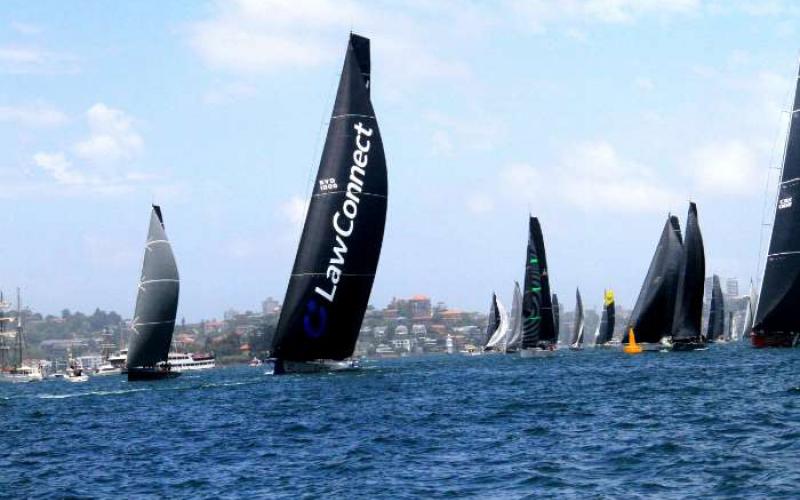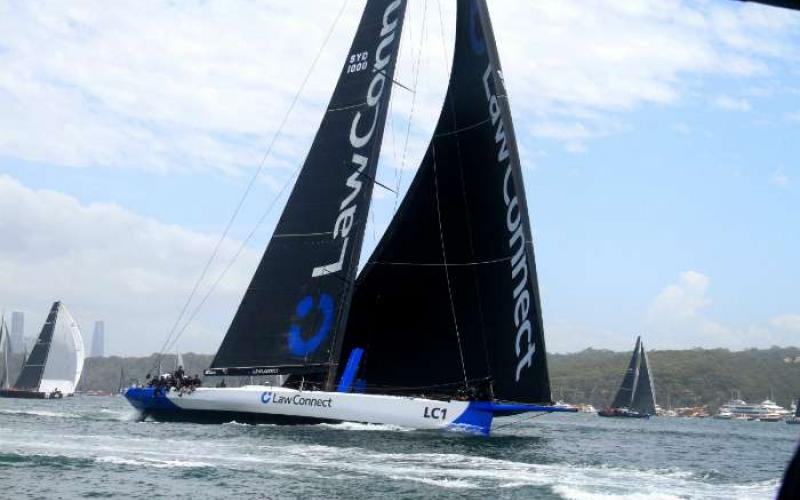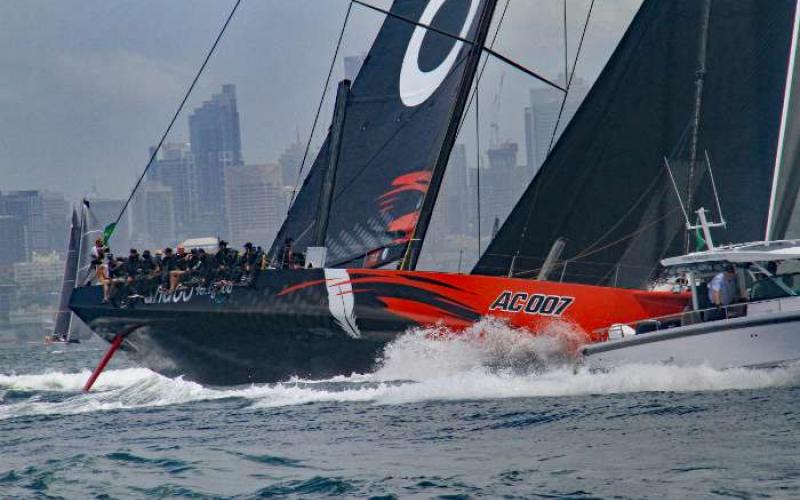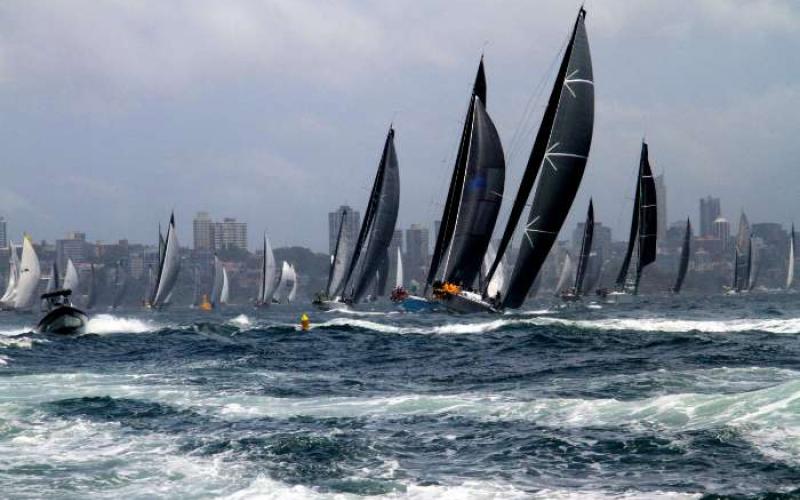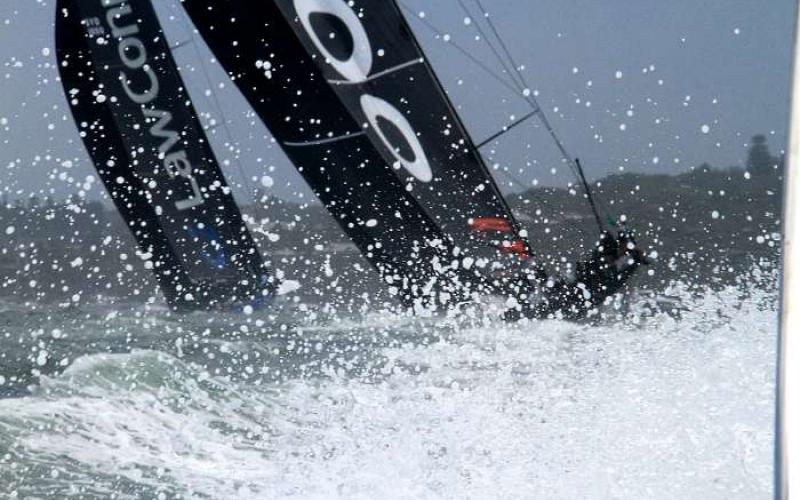A Chesapeake Sailor's Take on a Nail-Biting Rolex Sydney Hobart Race
He’s not on the Chesapeake anymore! SpinSheet Reporter Craig Ligibel reports from Down Under for the annual Rolex Sydney Hobart Race...
Take 103 sailboats ranging from 100-foot Maxi racing sailboats to 30-foot family cruisers. Drop them into a narrow cut between Sydney Harbor and the Tasman Sea. Add hundreds of spectator boats jockeying for position amid the foaming water. Throw in four- to six-foot choppy seas boiling up with treacherous currents.
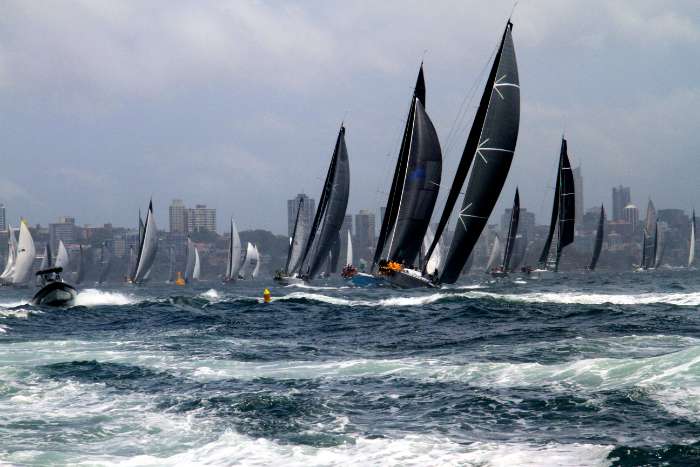
Don’t forget choppers swooping down at mast height or below. Scores of drones buzzing overhead. Journos jumping off boats from which they were reporting the start. (where they were picked up by following press boats). America’s Cup and Hobart winner Jimmy Spithill reporting from a super yacht. Tiny dinks trying to stay afloat as the fleet screams by.
Whew. And that was just the start of the 628 nm Rolex Sydney to Hobart Race, known as one of the most challenging ocean races in the world.
And if you thought the start was crazy, fast forward 43 hours for the nail-biting finish in Hobart!
Your roving SpinSheet journo was in Sydney Harbor for the start, joining a cast of sailing journalists as they attempted to get up close and personal with the diverse fleet of some of the world’s finest ocean racing yachts. I didn’t make it to Hobart, instead watching the commentary from the comfort of my couch a long black coffee spiked with rum in hand.
The storied race down the Australian Coast, across the ever-treacherous Bass Straight with an unpredictable finish up the fluky Derwent River leading to Hobart is a spectacle that transcends yachting traditions. In Sydney, Boxing Day is either celebrated by watching cricket or watching the start of the Sydney to Hobart in person or on the telly.
Most of the boats start the day at the Cruising Yacht Club docks in Darling Harbor. There, spectators mingle with sailors busy making last minute preparations for the 2-4 day race. Sail bags are hoisted. Provisions are loaded. Goodbyes are said while the well-heeled enjoy a glass of bubby from the comfort of their party boats.
“This is what it’s all about,” Hilary Arthure told SpinSheet as she readied her 36-foot Jeanneau Wyuna for what would be a three to four day day slog to Hobart. “Our boat is one of the smallest in the fleet. Being a woman owner and skipper is no big deal. My crew trusts each other. We’re looking forward to an exciting time.” Strapped to an aft stanchion is the boat’s mascot, a stuffed kangaroo, named appropriately Boomer.
Another favorite entry was Sylph, the oldest boat in the fleet, skippered by Robert Williams. Entered in the two-handed division, she has the honor of carrying the first cat ever to race in the classic: a 10-year old tabby named Oli. “When things get rough, Oli finds a nice warm spot below to curl up and wait for the blow to pass,” says Williams.
Across the dock French-American Charley Devanneaux was looking forward to a fast ride in his newly commissioned Beneteau First 44, Lenny. Devanneaux’s boat is the only US-flagged vessel in the fleet, joining 10 other international entries.
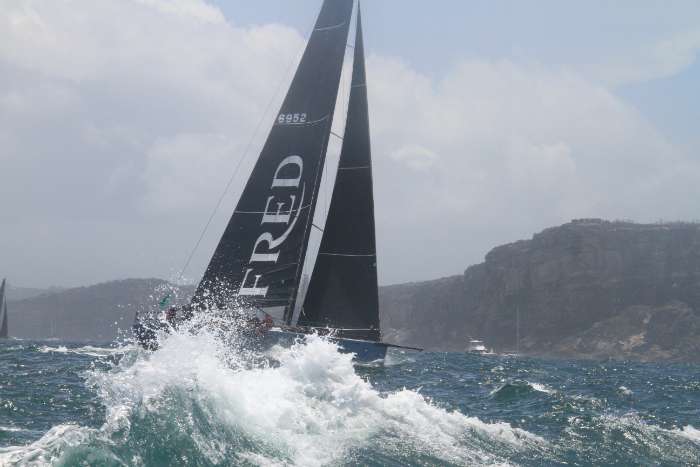
“I want to get to Hobart safely, have a good time, eat some good food (one of Charlie’s crew is a French chef), and build some memories.”
Devanneaux is one of the largest Beneteau dealers in the United States. He has been to the Annapolis Sailboat Show many times.
“I like the Chesapeake Bay,” the affable sailor said with a grin. “But this is the real deal.” The boat is named Lenny in honor of the recently deceased founder of the American Sailing Association, Lenny Shabes. “Lenny was a mentor of mine,” said Devanneaux. “We talked about this race often. Nice to remember him with as great boat competing in a great race.”
The start of the race is always a spectacle. One hundred plus boats jockey for position at one of four different start lines. Just as the cannon went off sending the four Maxi’s off on their run, a brief squall hit the fleet sending all scurrying for foulies. A couple of bolts of lightning brought everyone to attention.
Then it was off to the Heads, that narrow opening between the Harbor and the ocean.
Yours truly was happily ensconced in a 40-foot Riviera chase boat powered by two 250 hp diesel engines. We followed the fleet out as far as we could, bounding over, under and through the waves. One of my photographer mates slid back and forth across the sole of the boat, his cameras dangerously close to the three inches of water that was continually sloshing over the transom. It was one hand for my camera, one hand for the boat, one hand for my smart phone. Whoops. Not enough hands!
Lots of fun taking pix and not being washed overboard. The Maxis roared past us with the rest of the fleet following. In less than one hour, all boats were headed south with a steady 8-10 knot Northeast wind pushing them along.
During the night, many boats in the fleet experienced a once-in-a-lifetime display of lightning as they roared down the coast fighting 8-10 foot seas and 30-40 knot winds. Several boats including the Maxi Scallywag retired due to equipment failure. Dawn would tell the tale of the race as 24 hours after the start the boats were scattered over a 300-mile swath of ocean.
Each class of boats has its own finishing order. The first boats to cross the finish line receive Line Honors. The boat with the best handicap figuring in corrected time is awarded the cherished Tattersall Cup.
John “Woody” Winning, whose Andoo Comanche won Line Honors last year, was matter of fact about the race: “It’s 18 hours or so of pure hell. Not my favorite way to spend a couple of days on the water.” Winning, SpinSheet readers might recall, led a contingent of Historical flying 18s as they crossed the Pacific to challenge Annapolis’ Bear and Bull sandbaggers in a series of match races on the Bay. “Our boats did well up here,” he said. “We just weren’t used to the heat and humidity and the light winds.”
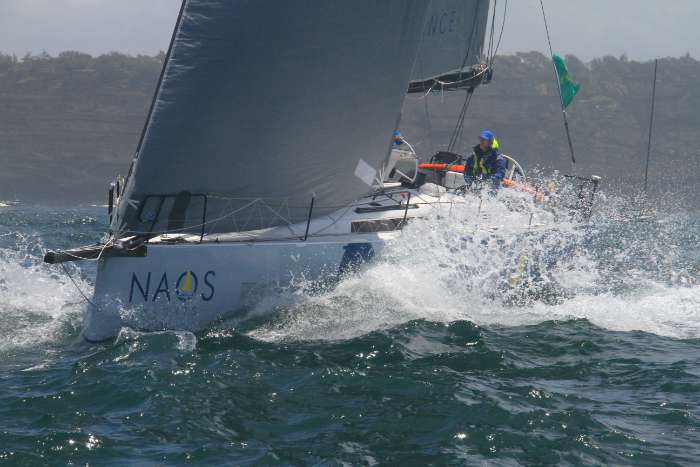
Winning’s run to Hobart was anything but a joyride. Andoo held a lead over three-time runner up LawConnect for most of the race, finally succumbing to a brilliant tacking dual that saw the Christian Beck-owned Maxi nosing out Andoo Comanche by 51 seconds at the line.
“After being the bridesmaid so many times, crossing the line first is a dream come true,” said Beck at the finish. “Credit to the crew. I have called LawConnect a “shxxt box” because she’s not a beauty queen like Comanche. But we sure put her through her paces. A little touch up paint and she’ll be ready for next year.” At dockside Beck joked” Anybody want to buy her?”
LawConnect and Andoo Comanche had fought neck and neck for much of the race. Then, in the crossing of Storm Bay, Andoo Comanche moved away to a 2nm lead. But on the ever-tricky Derwent River, LawConnect fought back to catch them in the slight and fluky breeze.
In the last 1.5 nm, the lead changed five times as the two maxis executed jibes to milk what wind there was. LawConnect managed to finally make the last move to win by 51 seconds.
By the time LawConnect crossed the finish line, 11 of the race’s starting 103-strong fleet had pulled the pin, with some reporting damage and seasickness in challenging conditions which included a thunderstorm on the first night. As many as 20 more boats are expected to retire before race end due to challenging conditions in the Bass Straight. LawConnect navigator US sailor Chris Lewis described the stormy seas as “wild” with 180-degree wind shifts. ”My strategy was to get out in front, read the conditions, and stay in contention until the end.”
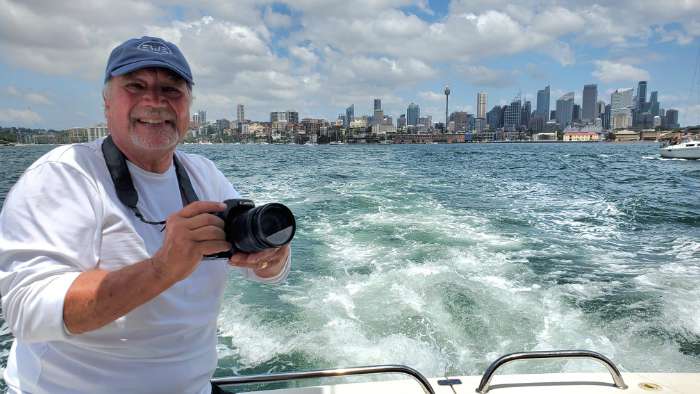
“When the boat made the final turn towards the finish line, I didn’t think we’d do it,” said Beck. “But we hung in there and ghosted across the line doing less than 5 knots.”
After the race, Beck took the traditional swim in the chilly waters off Hobart’s Constitution Dock.
As I write this, more than 90 percent of the fleet are still out to sea…some with three or more days of tough sailing ahead.
Will this journo ever sail in the Sydney to Hobart race? Doubtful. It’s too much fun bringing all the excitement of the race to my loyal SpinSheet readers with my words and pictures. Find results on the Rolex Sydney Hobart page.
Words and pictures by Craig Ligibel
